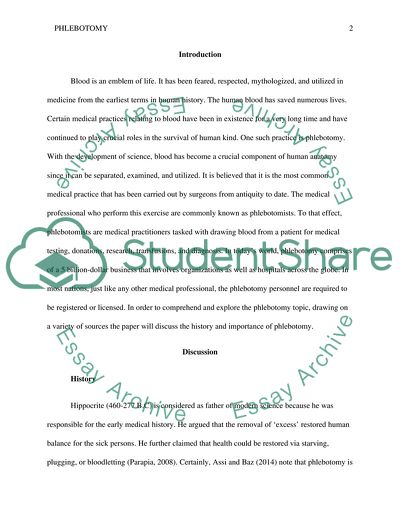Cite this document
(The History and Importance of Phlebotomy Research Paper, n.d.)
The History and Importance of Phlebotomy Research Paper. Retrieved from https://studentshare.org/health-sciences-medicine/1865948-the-history-and-importance-of-phlebotomy
The History and Importance of Phlebotomy Research Paper. Retrieved from https://studentshare.org/health-sciences-medicine/1865948-the-history-and-importance-of-phlebotomy
(The History and Importance of Phlebotomy Research Paper)
The History and Importance of Phlebotomy Research Paper. https://studentshare.org/health-sciences-medicine/1865948-the-history-and-importance-of-phlebotomy.
The History and Importance of Phlebotomy Research Paper. https://studentshare.org/health-sciences-medicine/1865948-the-history-and-importance-of-phlebotomy.
“The History and Importance of Phlebotomy Research Paper”, n.d. https://studentshare.org/health-sciences-medicine/1865948-the-history-and-importance-of-phlebotomy.


